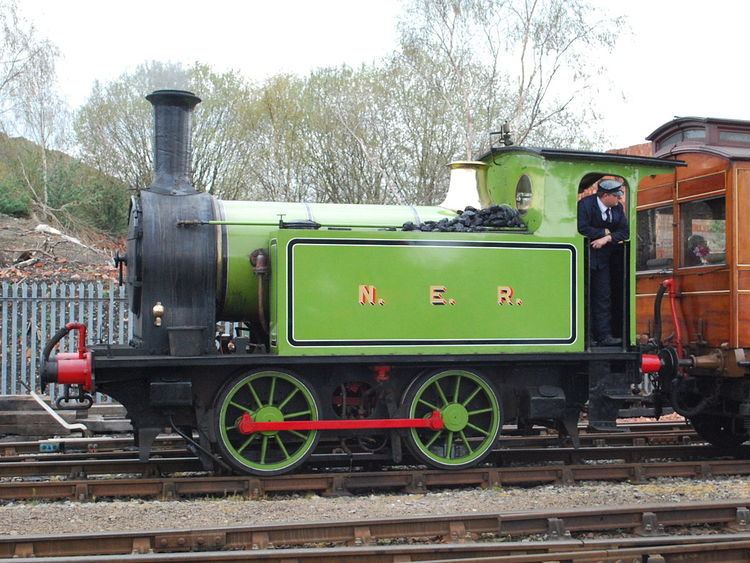Power type Steam Build date 1888–1923 Configuration 0-4-0T | Designer T. W. Worsdell Total produced 24 | |
 | ||
Builder Gateshead Works (19)Darlington Works (5) | ||
The North Eastern Railway (NER) Class H, classified as Class Y7 by the London and North Eastern Railway (LNER) is a class of 0-4-0T steam locomotives designed for shunting.
Contents
Description
Introduced in 1888 by Thomas W. Worsdell, six were built in 1888. Their simple, bare design easily navigated the tight curves and poor quality track which they ran on. The H proved so successful, that the NER ordered a further ten in 1891, three in 1897 and five more were ordered by the LNER in 1923.
Coal was carried in side bunkers incorporated into the side tanks. The absence of a rear bunker and the small size of the cab provided the driver with a clear view of the buffer bar when reversing onto a train. The H shared their simple domeless boiler design with the H1 (J78) and H2 (J79) classes.
The locos were originally fitted with dumb buffers, but these were changed for small round buffers during the 1930s, some also gaining vacuum brakes during this period; only hand and steam brakes were fitted when built.
Locomotives operating at Tyne Dock were altered to take shunting poles on each corner of the loco, giving the ability to pull a wagon on an adjacent line.
Numbering and livery
The LNER originally painted the Y7s in black with ¼inch vermillion lining; repaints after 1928 omitted this with locomotives in plain black.
Two entered British Railways stock in 1948, becoming BR 68088 and 68089.
Operation and preservation
The original work of these locos was on Tyneside, at Hull docks, and within Darlington works, but LNER no.8088 was recorded working at Stratford works between 1943 and 1952.
Dock work was hit hard by the depression, and between 1929 and 1932 the sixteen locomotives which made up the first two batches delivered were withdrawn, nine being sold to industrial use while the remainder were scrapped.
Two have survived to preservation:
